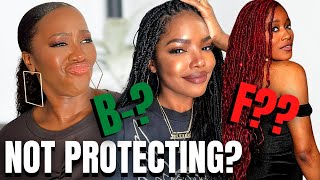Hair Growth Life Cycle: The 3 Stages
During your life, you’ve certainly come across a time when your hair was falling a lot or had a hard time growing, right?
Most times, this annoyingly common situation happens due to lack of proper daily care or use of hair products, hormonal changes or even bad eating habits lacking essential nutrients for your locks. To understand why this happens, you need to know about the hair growth cycle.
But what if we’re doing everything right and it still falls or grows slowly? After we’re past the aforementioned factors, it’s possible that it’s just a natural phase of the hair’s life.
A lot of people don’t know it but, just like every human (that is born, grows up, reproduce, grows old and dies), your hair also has a life cycle which you’ll learn about in today’s article.

At times, it’s possible that your hair starts to fall more frequently and grow slower than before. Do you want to know how the hair growth cycle really works? Keep reading.
The Stages of Hair Growth Cycle

Phase 1: Anagen (Growth)
The first phase of the cycle is called anagen or growth. At this stage, the strands grow in the lower extremity of the follicles in a regenerative process with increased production of capillary fiber and grow independently.
That means each follicle has it’s own life and the strands grow independently from one another, not together. The anagen phase lasts between three to six years, during that time, our hair has between 80% and 90% of all strands (around 100 thousand), which grow at about 1.25 cm every month.
Phase 2: Catagen (Rest)
The catagen phase, also known as the resting phase, is a period in which the strands free themselves from the lower extremity of the follicles due to a halting in the fiber production, then go to the surface of the skin where they wait for death and it’s eventual fall. This phase lasts between three and four weeks.
Phase 3: Telogen (Fall)
In the third and last phase of the hair growth life cycle, the strands are still attached to the follicles in the scalp’s surface and remain that way for around three months. After this time, they start to come off when you wash or brush your hair, being pushed out by newer strands in the anagen stage, starting the cycle anew.
Watch the below video to understand better.
When hair growth and hair fall is within the limits?
After learning about the 3 phases of the hair growth cycle, you need to know when the hair growth and hair fall is within normal parameters.
Anagen Phase
For a normal human being, the hair usually grows from 1 cm to 1.25 cm every month during the anagen phase, which lasts from 3 to 6 years.

Telogen Phase
In the telogen phase, it is normal to lose between 80 and 100 strands every day, which are quickly replaced by new ones in the growth phase.
If you notice that you’re losing more hair or that you’re not getting enough new ones, there may be something wrong with your scalp and you should visit a dermatologist to figure out what’s going on.
Hair growth and fall cycle:
How many hair growth cycles do a normal person goes through in a lifetime?
The hair will never grow in a single cycle, but only through successive ones. It is estimated that each person goes through 20 to 30 hair growth cycles in their lifetime. For that reason, it is normal that they grow thinner and weaker all the way until death.
Besides that, the older we are, the less fiber we produce in the anagen phase, resulting in fewer strands being produce until it eventually stops and we have to deal with baldness.
In healthy people, 90% of the hair is in the anagen (growth) phase and only 10% in the catagen (rest) or telogen (falling).
If there is a different balance between them, it’s important to visit your dermatologist to look for the real cause of your hair loss and why it is having trouble growing back.
Most of the time, It should be related to the factors mentioned in the article like – bad eating habits, hormonal changes, lack of care, etc. So, stop being a doctor yourself and go to a dermatologist if needed.
You may like:
- Braided Hair and Hair Growth
- Laser Hair Growth Treatment – Advantages and Disadvantages




